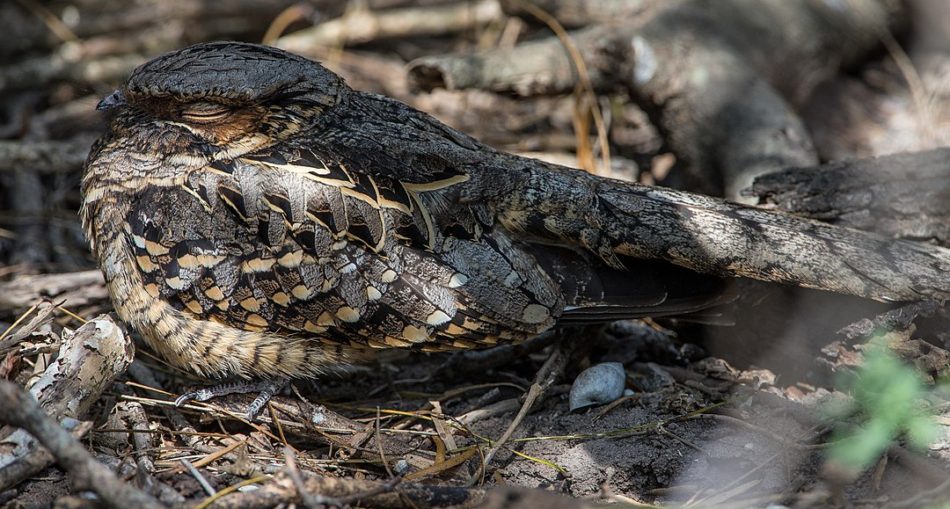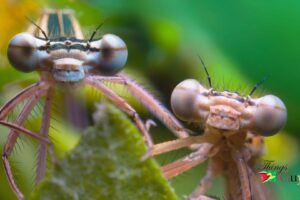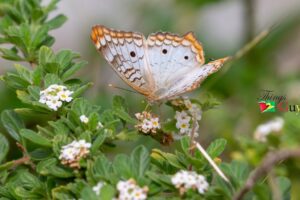The Common Pauraque is a nightjar which are nocturnal, grey-brown birds with excellent camouflaging plumage. This particular species is a ground-dweller and nests among the fallen leaves. They spend their days in hiding and rest then as the sun goes down, they head out to hunt.
The Common Pauraque is native to Guyana and has been spotted near the Rupununi River. However, they are also found in Mexico, the United States and parts of Central America, the West Indies. In addition to these, the nightjar can be found in a number of countries in South America including Peru, Bolivia, Argentina Belize, Brazil Costa Rica, Ecuador, French Guiana, Paraguay, Suriname, and Trinidad and Tobago. While this bird is commonly known as the Common Pauraque, the scientific name of the species is Nyctidromus albicollis and the species consist of seven subspecies.
Interesting Tip
- Some Pauraques may head to Mexico from the United States during winter.
- There are seven (7)subspecies of the Common Pauraque.
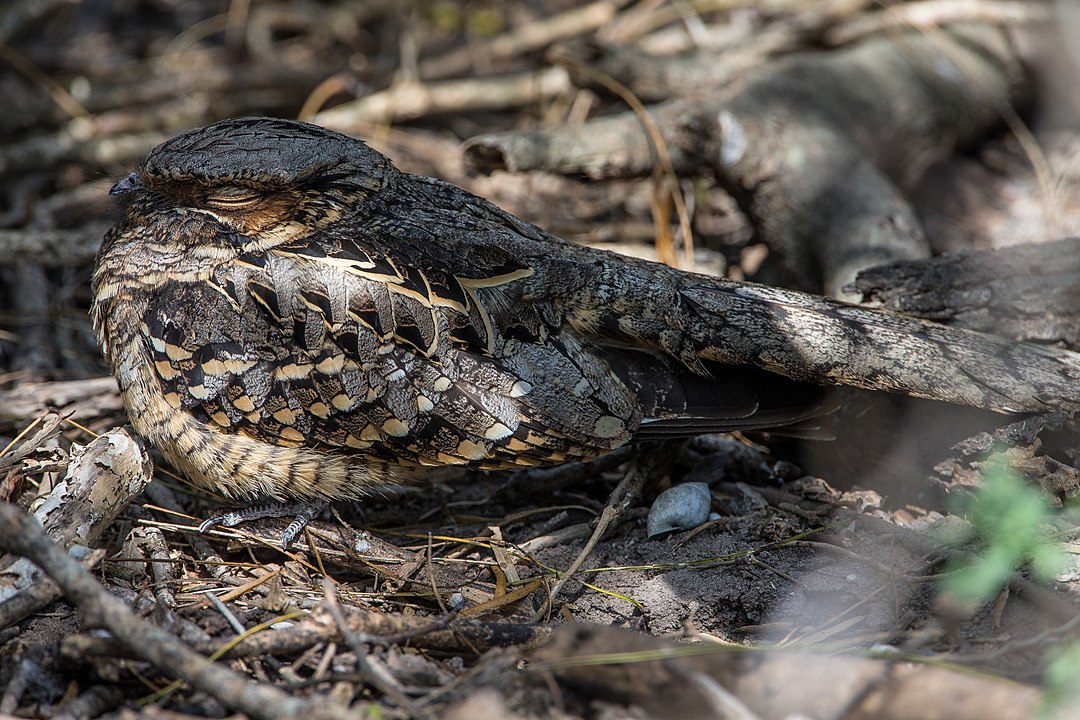
The Common Pauraque – Photo By Andy Morffew, CC BY 2.0, https://commons.wikimedia.org/w/index.php?curid=61980368
Description Of The Common Pauraque
The Common Pauraque is a medium-sized bird about eight to eleven (8-11) inches in length. Its plumage is either a greyish-brown or rufous-brown in colour and variegated. This nightjar species has a long tail and long legs with rounded, broad wings. Near the wingtips of the adult male, there is a white band and its outer tail is primarily white. On the other hand, the wing band of the female is narrower, with less white on its tail. Common Pauraques have eyerings and facial stripes which are in contrast to the reddish side of the face.
Scientific Classification Of The Common Pauraque
- Kingdom: Animalia
- Phylum: Chordata
- Class: Aves
- Order: Caprimulgiformes
- Family: Caprimulgidae
- Genus: Nyctidromus
- Species: N. albicollis
Habitat Of The Common Pauraque
The habitats of the Common Pauraque vary and range from woodland, grasslands to crop fields, grass plains, mangrove swamps, marshes and even close to human habitation. During the day, they seem to prefer dense vegetation to hide and rest, and at night they head to open habitats.
Diet Of The Common Pauraque
Like all nightjars, the Common Pauraque begins its hunt at night. The diet of this nocturnal bird consists primarily of insects like moths, and a variety of beetles including ground beetles, bees beetles, long-horned beetles leaf beetles, and even fireflies. The Common Pauraque tend to catch its meal in midflight, by flycatching from a low branch or by foraging in open spaces.
Behaviour Of The Common Pauraque
If disturbed, it will sometimes run rather than fly, and it frequently rests on roads and tracks. The Common Pauraque frequent human-inhabited areas and like to rest on tracks and roadways. When disturbed it is most likely to run away instead of flying like other birds. In the courtship flights, males would sing a soft puk puk and a whip as he flys around the female, whose call is a fast succession of whip sounds. The male song also includes a weeeow wheeooo (“who-r-you”) but can vary.
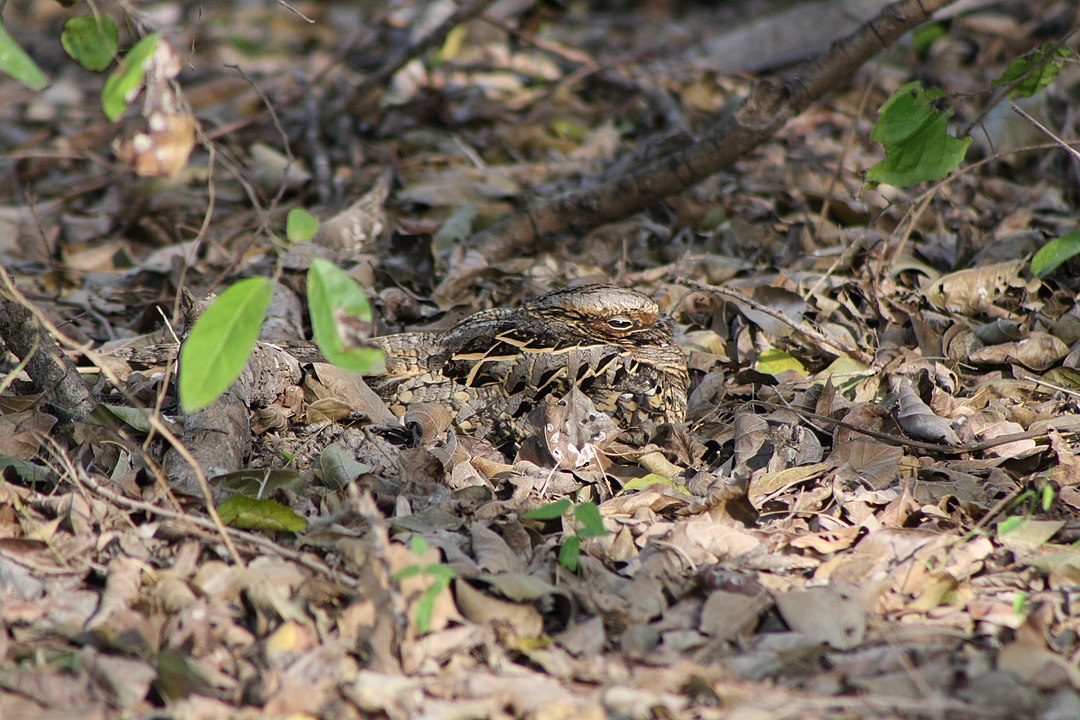
Spot the Pauraque! By Kati Fleming – Own work, CC BY-SA 3.0, https://commons.wikimedia.org/w/index.php?curid=21088519
Reproduction Of The Common Pauraque
The Common Pauraque does not make a nest but instead lays its eggs on the floor of its habitat or on fallen leaves. Clutches often range from a number between one to three (1-3). The eggs are oval-shaped eggs, pale pink in colour and dotted in brown. Both parents incubate the eggs for a period of nineteen to twenty (19-20) days. Hatchlings emerge covered in brown feather and are able to move soon after.
Interesting Tip
- The young are often preyed upon by small mammals like cats and dogs and even marmosets, depending on the location of their habitats.
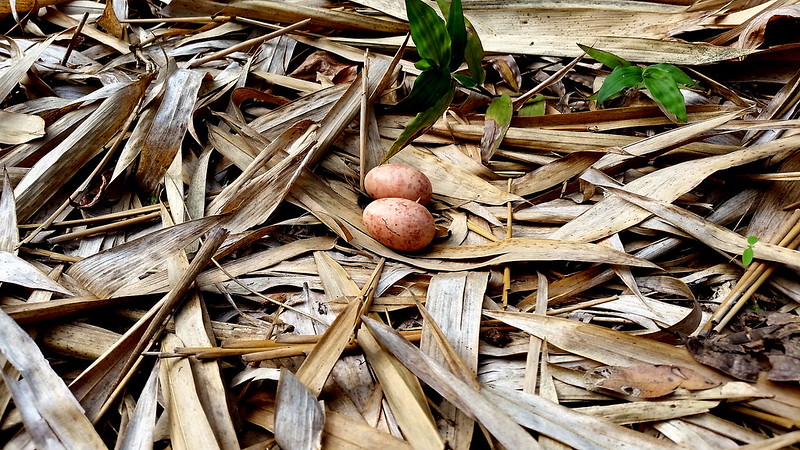
Nest of the Common Pauraque – Photo ny: Feroze Omardeen (https://www.flickr.com/photos/sucriertt/26782029302/)
About The Common Pauraque
Native to Guyana, the Common Pauraque is a skilled camouflager, and tolerable to human interferences like logging. One may even say it has benefited from limited deforestation for the birds hunt efficiently in areas of low and or secondary growth caused by this. The Common Pauraque blends really well in fallen leaves on the forest floor and is often difficult to spot. Keep an eye out the next time you’re visiting near the Rupununi River or any wooded and marshy areas!
Article Reference
- https://en.wikipedia.org/wiki/Pauraque
- https://www.allaboutbirds.org/guide/Common_Pauraque/id
- https://www.allaboutbirds.org/guide/Common_Pauraque/overview
- https://www.beautyofbirds.com/pauraque.html
- http://www.exoticbirding.com/guyana/rupununi-river/checklist.html

